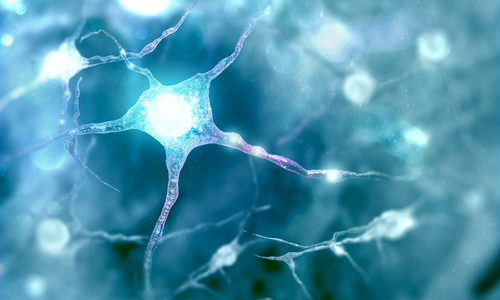A study by researchers the National Institutes of Health and the Uniformed Services University (USU) has identified a new form of amyotrophic lateral sclerosis (ALS) that affects individuals during childhood.
ALS, also known as Lou Gehrig’s disease, is a progressive disease of the nervous system that affects nerve cells in the brain and spinal cord that control voluntary muscle movement. The disease starts with muscle weakness and stiffness, but as the disease progresses, affected individuals suffer loss of muscle control, including the ability to move, eat, and breathe. The disease is fatal and there are no effective treatments to stop or slow progression of the disease.
ALS usually affects people between the ages of 55 and 75, with men more likely than women to contract the disease. The disease appears to be random and there are no risk actors that are clearly associated with the disease.
The researchers were investigating medical mystery patients, with the study starting with a young woman in Italy who was confined to a wheelchair and had a surgically implanted tracheostomy tube to help her breathe. Investigations uncovered some of the hallmarks of ALS, such as muscle weakness, atrophy, and paralysis. While the symptoms matched those of ALS, the patient was much younger than other individuals who had been diagnosed with the disease.
The study involved 11 patients with similar symptoms which had started at around 4 years of age. The patients lived for between 5 and 20 years from the onset of symptoms. Typically, ALS patients only live for between 3-5 years after being diagnosed.
The researchers identified the patients as having a unique form of ALS from DNA analysis. The researchers examined patients’ exomes and found changes in the same narrow section of the gene SPLTC1. In 4 of the 11 patients, changes had been inherited, while the others appeared to have de novo gene mutations.
The SPLTC1 protein encoded by the gene is part of an enzyme called SPT, which is required for catalysing the first of several reactions in the synthesis of sphingolipids. SPLTC1 gene mutations also cause another neurological disorder – hereditary sensory and autonomic neuropathy type 1 (HSAN1). HSAN1 mutations result in the enzyme producing harmful versions of sphingolipids.
It was initially thought that the mutation similarly resulted in harmful sphingolipids being produced, but the researchers found no evidence of harmful sphingolipids in blood tests. Further analyses showed the mutation resulted in the patients producing abnormally high levels of sphingolipids, suggesting the mutations enhanced SPT activity.
The researchers were able to reproduce the high levels of sphingolipids in vitro using programmed neurons grown in petri dishes, with the high SLT activity enhanced by the amino acid serine. Serine supplementation has been suggested as a possible treatment for HSAN1, but similar treatments in ALS would likely have the opposite effect.
“Our results suggest that these ALS patients are essentially living without a brake on SPT activity. SPT is controlled by a feedback loop. When sphingolipid levels are high then ORMDL proteins bind to and slow down SPT. The mutations these patients carry essentially short circuit this feedback loop,” said Teresa M. Dunn, Ph.D., professor and chair at USU, and Thorsten Hornemann, Ph.D., at the University of Zurich in Switzerland. “We thought that restoring this brake may be a good strategy for treating this type of ALS.”
The theory was tested using interfering strands of RNA that had been designed to turn off the mutant SPLTC1 genes in the ALS patients. The researchers found in their experiments on the patients’ skin cells the RNA strands reduced levels of SPLTC1 gene activity and restored sphingosine levels to normal.
While these results are only preliminary, they suggest that using a precision gene silencing strategy may be the best way to treat these ALS patients.
You can read more about the study in the paper – Childhood Amyotrophic Lateral Sclerosis Caused by Excess Sphingolipid Synthesis – which was recently published in Nature Medicine. DOI: 10.1038/s41591-021-01346-1
